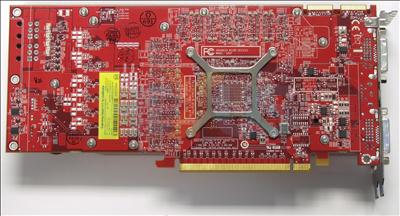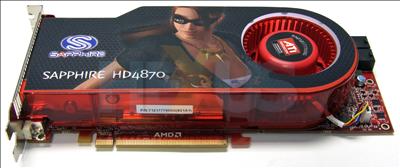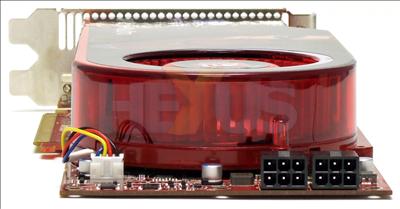Sapphire Radeon HD 4870
The Radeon HD 4870 512MiB is positioned as the enthusiast-class SKU, fitting in the same performance space that's currently occupied by the twin-GPU Radeon HD 3870 X2.ATI has recommended a street price of $299 (£175) and that puts it firmly between proposed GeForce 9800 GTX/+ ($229) pricing and GeForce GTX 260 ($399). NVIDIA's partners will encroach on the $299 price by having a number of highly-overclocked GTX+ cards on the market, so the price-points overlap nicely.
It should be clear by now that there's more of everything with the Radeon HD 4870. More GPU, shader, texturing, and memory bandwidth, but that also leads to more power-draw.
Sapphire's HD 4870 is clocked in at reference speeds, that is, 750MHz for the core and shaders and 3.6GHz for GDDR5 memory.
In pure numbers' terms, that's a 20 per cent increase in core/shader and a whopping 80 per cent in terms of memory bandwidth.
The question that arises is just how beneficial is having gobs of bandwidth on the HD 4800-series GPUs? Our analysis reckons it'll boost performance considerably.
The eight GDDR5 chips are contained on the topside, so expect to see 1GiB-equipped models, when they ship, to have the corresponding eight on the rear, assuming density stay the same.
The Radeon HD 4870 is specified with a 160W TDP, or 45 per cent higher than the single-slot-taking HD 4850. That infers ATI's had to bump up the voltage to the core, in particular, to ensure that it runs at 750MHz. The GDDR5 memory, on the other hand, hums along at 1.5V - nice and frugal.
Increased power-draw is physically manifested via a dual-slot cooler that's somewhat akin to the Radeon HD 3870's. The radial fan is offset from the GPU and blows towards the back, across the heat-absorbing copper heatsink and fins.
Like the HD 4850, the GPU idles at a lofty 71°C, rising to 83°C under load. The idling issue is known and should be rectified by a BIOS fix.
Two six-pin PCIe power connectors are necessary, of course.
Hot air, pushed back by the fan, is vented through the, well, vents, at the top of the backplate.
The two DVI connectors offer dual-link compliance as well as HDMI (7.1-channel) passthrough. The mini-DIN socket is for TV-out only, though.
Expect to see DisplayPort connectors on future HD 4800-series models as the interconnect gains traction with monitor manufacturers, but didn't we say that with the HD 3870?














